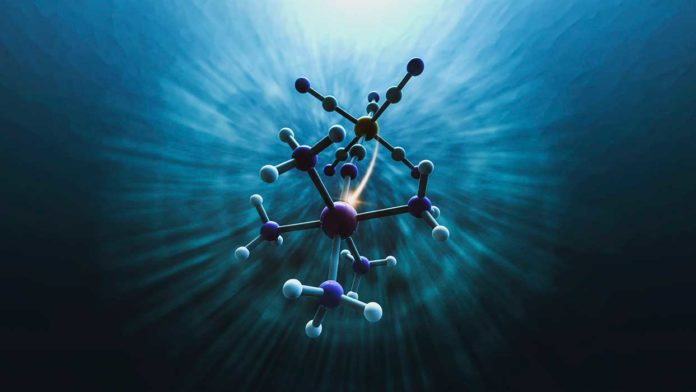Solvent plays a critical role in ultrafast electron-transfer reactions. However, solvent reorganization occurs on multiple length scales and selectively measuring short-range solute. Solvent interactions at the atomic level with femtosecond time resolution, i.e., measuring the motions of solvent molecules to determine how they influence the process- remain a challenge.
In a new study, Scientists captured the rapid motions of solvent molecules that impact light-driven electron transfer in a molecular complex. Through this study, scientists learned how to control energy flow in molecules.
This is for the first time, scientists were able to capture a specific motion of a solvent experimentally. Until recently, they didn’t have tools that were directly sensitive to atomic motion at very fast time scales to investigate this.
Scientists focused on a molecular complex containing two metal atoms that can exchange an electron between them. This system serves as a platform to study electron transfer reactions. First, they dissolved the complex in water, where it formed strong hydrogen bonds with surrounding water molecules. They kicked off the electron transfer process between the metal atoms using an optical laser pulse. By scattering X-ray pulses from SLAC’s Linac Coherent Light Source off the sample, they monitored the motion of the atoms in the complex and the surrounding solvent molecules during the electron transfer.
The ultrashort X-ray pulses, just millionths of a billionth of a second long, captured the water molecules’ synchronized motions that were bonded to the complex. As an electron transferred from one metal atom to the other, the hydrogen bonds weakened, and the solvent molecules moved away from the complex. When the electron returned to the first metal atom, the solvent molecules oscillated back to their original position.
Co-senior author Niri Govind, a physicist at PNNL, said, “The combination of experiment and molecular simulation was crucial to understanding the coupled dance that occurs during ultrafast electron transfer between the metal atoms and the surrounding water molecules.”
In the future, scientists hope to conduct more experiments with other solvents to see how they affect electron transfer.
Lead author Elisa Biasin, a research associate at the SLAC-based Stanford PULSE Institute, said, “The goal is to learn enough at the atomic scale that we can make predictions and learn how to exert some level of control on electron transfers and other important chemical reactions.”
Journal Reference:
- Biasin, E., Fox, Z.W., Andersen, A. et al. Direct observation of coherent femtosecond solvent reorganization coupled to intramolecular electron transfer. Nat. Chem. (2021). DOI: 10.1038/s41557-020-00629-3
